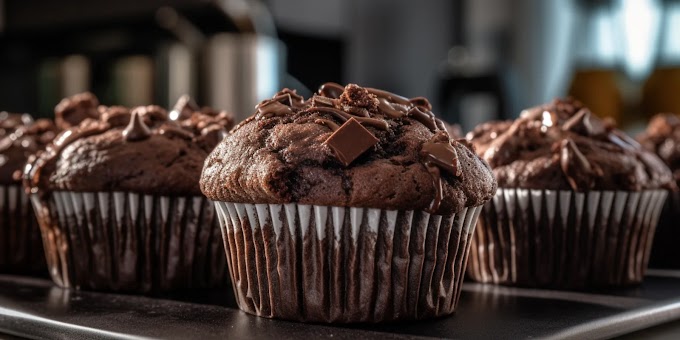Ingredients for Making Paneer Without Lemon
Here’s what you’ll need to make fresh paneer at home:
1 liter of full-fat milk (You can use cow's milk or buffalo milk, but make sure it’s fresh and unprocessed for the best results)
1-2 tablespoons of white vinegar or yogurt (these are effective substitutes for lemon juice)
A muslin cloth or a fine strainer (for draining the curdled milk)
A heavy object or weight (to press the paneer)
Water (for rinsing the paneer)
Step-by-Step Guide to Make Paneer at Home Without Lemon
Step 1: Boil the Milk
Start by pouring the milk into a heavy-bottomed pan. Place the pan on medium heat and let the milk come to a gentle boil. Stir occasionally to prevent the milk from sticking to the bottom of the pan or forming a layer of cream on top. As soon as the milk starts to bubble and rise, reduce the heat to low.
Step 2: Add the Curdling Agent (Vinegar or Yogurt)
Once the milk comes to a boil, it’s time to add your alternative to lemon juice. Here are two effective substitutes:
Vinegar: White vinegar is a great alternative to lemon juice. Add 1 to 2 tablespoons of white vinegar to the milk and stir gently. As you stir, you’ll notice that the milk starts to curdle. The curds will separate from the whey, and you’ll see a greenish-yellow liquid. If the milk doesn’t curdle fully, you can add a little more vinegar, 1 teaspoon at a time, until the curds form completely.
Yogurt: Plain yogurt is another mild option to curdle milk. Use about 2 to 3 tablespoons of yogurt and stir it into the hot milk. The yogurt will act as a natural acid, causing the milk to split into curds and whey. Yogurt gives the paneer a slightly softer texture, and the end product will be creamier than paneer made with vinegar or lemon juice.
Step 3: Let the Curds Form
After adding your curdling agent, let the mixture sit for a minute to allow the milk to curdle fully. Stir gently to help the curds form, but don’t stir too much or too vigorously, as this can break the curds into very small pieces. The goal is to have soft, fluffy curds separated from the whey.
If you notice that the milk hasn’t curdled completely, you can add a little more vinegar or yogurt and stir again. Once the curds and whey are completely separated, turn off the heat.
Step 4: Strain the Curds
Place a large bowl in your sink to catch the whey. Line a strainer or colander with a muslin cloth or cheesecloth, and pour the curdled milk mixture into the strainer. The whey will drain out, leaving the curds behind in the cloth. Be careful, as the mixture will still be hot.
Step 5: Rinse the Curds
After straining, rinse the curds under cold water for a few seconds. This helps to remove the vinegar or yogurt flavor from the paneer and also cools the curds down, making them easier to handle. Gently gather the edges of the cloth and squeeze out any excess water from the paneer.
Step 6: Press the Paneer
Now that you have your curds, it’s time to press them to form a firm block of paneer. Gather the edges of the muslin cloth and tie them together tightly, forming a bundle. Place the bundle on a flat surface, such as a plate or cutting board, and put a heavy object on top (like a pot filled with water or a cast-iron pan). Let the paneer sit under the weight for about 30 to 60 minutes, depending on how firm you want it to be.
The longer you press the paneer, the firmer it will become. If you prefer softer paneer, you can reduce the pressing time.
Step 7: Cut and Store the Paneer
Once the paneer is pressed to your desired consistency, remove the weight and unwrap the muslin cloth. You should have a nice, firm block of fresh paneer. Place the paneer on a clean cutting board and cut it into cubes or slices according to your recipe’s requirements.
Paneer can be used immediately in curries, salads, or stir-fries. If you’re not using it right away, store it in an airtight container in the refrigerator for up to two days. To keep it moist, you can store the paneer in a container filled with water.
Tips for Making Perfect Paneer
Use full-fat milk: Whole milk is best for making paneer because it yields a creamier and richer cheese. Skim or low-fat milk won’t produce the same soft and rich paneer.
Don’t overheat the milk: When you bring the milk to a boil, keep an eye on it. Once it starts to boil, reduce the heat to prevent burning.
Ensure proper curdling: If the milk doesn’t curdle after adding vinegar or yogurt, you may need to add a bit more. But be careful not to add too much, as the paneer may become too sour.
Adjust pressing time for texture: If you want softer paneer, press it for 30 minutes. For firmer paneer, press it for up to an hour or longer.
Use the whey: Don’t throw away the whey that’s left after straining the paneer. It’s rich in nutrients and can be used in soups, gravies, or for kneading dough.
Conclusion
Making paneer at home without lemon is a simple and satisfying process. By using alternatives like vinegar or yogurt, you can still enjoy fresh, delicious paneer without the tangy aftertaste that lemon sometimes leaves behind. Whether you’re preparing a rich paneer curry or a fresh paneer salad, homemade paneer can elevate any dish. Plus, the process is so straightforward that you’ll find yourself making it regularly, enjoying the superior taste and texture compared to store-bought options.
So, the next time you’re out of lemon or simply prefer a different flavor profile, try this method to make perfect paneer at home.








Social Plugin